Three new graphics cards from Nvidia at CES 2024
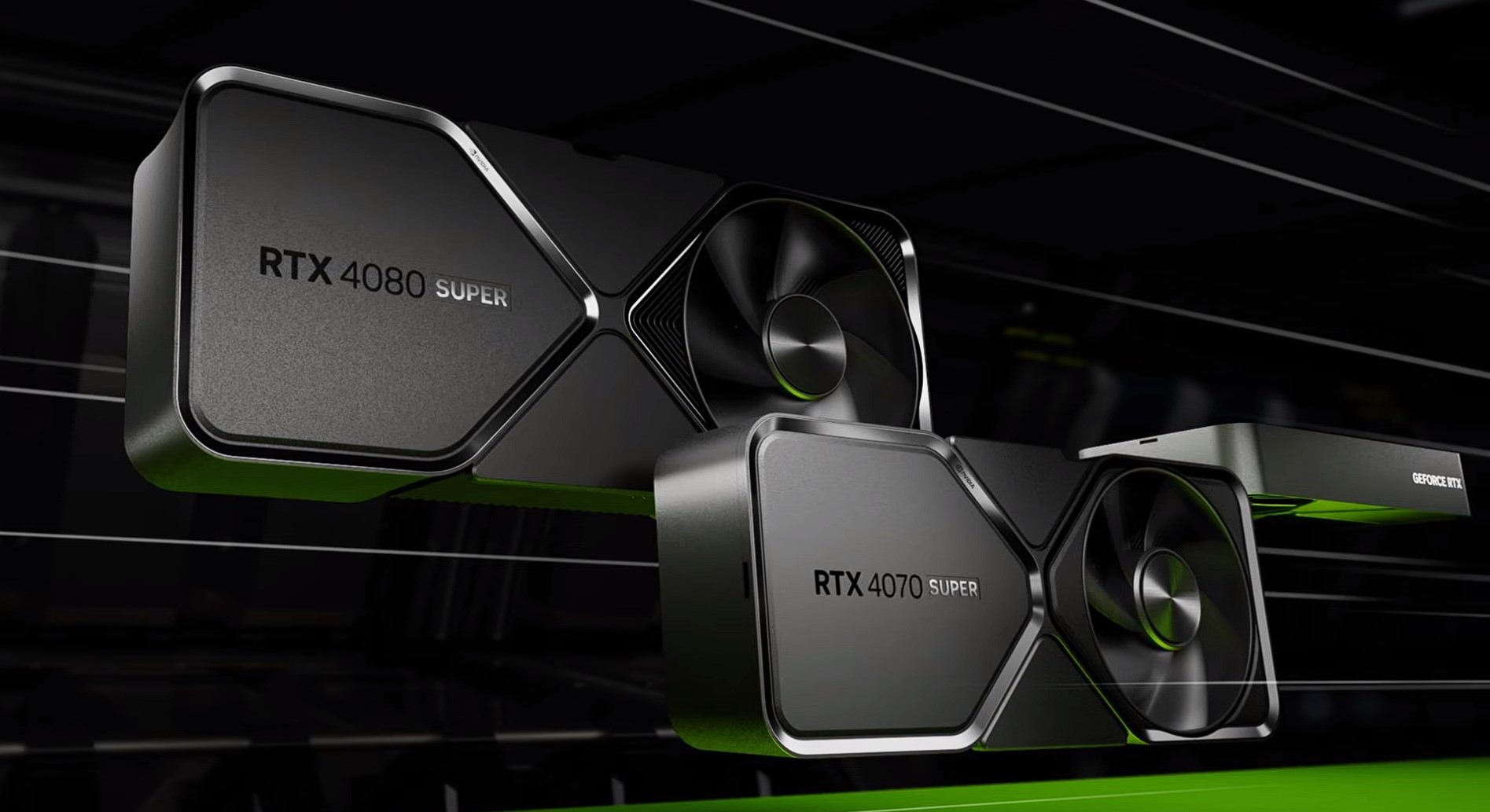
CES in Las Vegas is slowly getting the wheels in motion, and according to tradition, Nvidia was one of the first to really kick things off. They did that with their Nvidia Special Address event, where they talked about a lot of different news. For once, it wasn't Jensen Huang himself who delivered the news, but rather Jeff Fisher.

Most anticipated among gaming fans were the expected SUPER graphics cards in the 40 series. There have been so many rumors leading up to CES that it wasn't exactly a surprise when the new cards were announced.
Overall, Nvidia presented a total of three new cards, all of which will land here in January.
RTX 4070 SUPER
The first card to be launched is the RTX 4070 SUPER card, which will hit the market on January 17. The headline here from Nvidia was: "20% more cores - faster than an RTX 3090"
The card is of course built on the Ada Lovelace architecture and comes with 7168 Cuda Cores over the 5888 on the regular RTX 4070 card. There is an increase in the number of Tensor Cores to 224 and RT Cores to 56 over the previous card's 184 and 46 respectively.
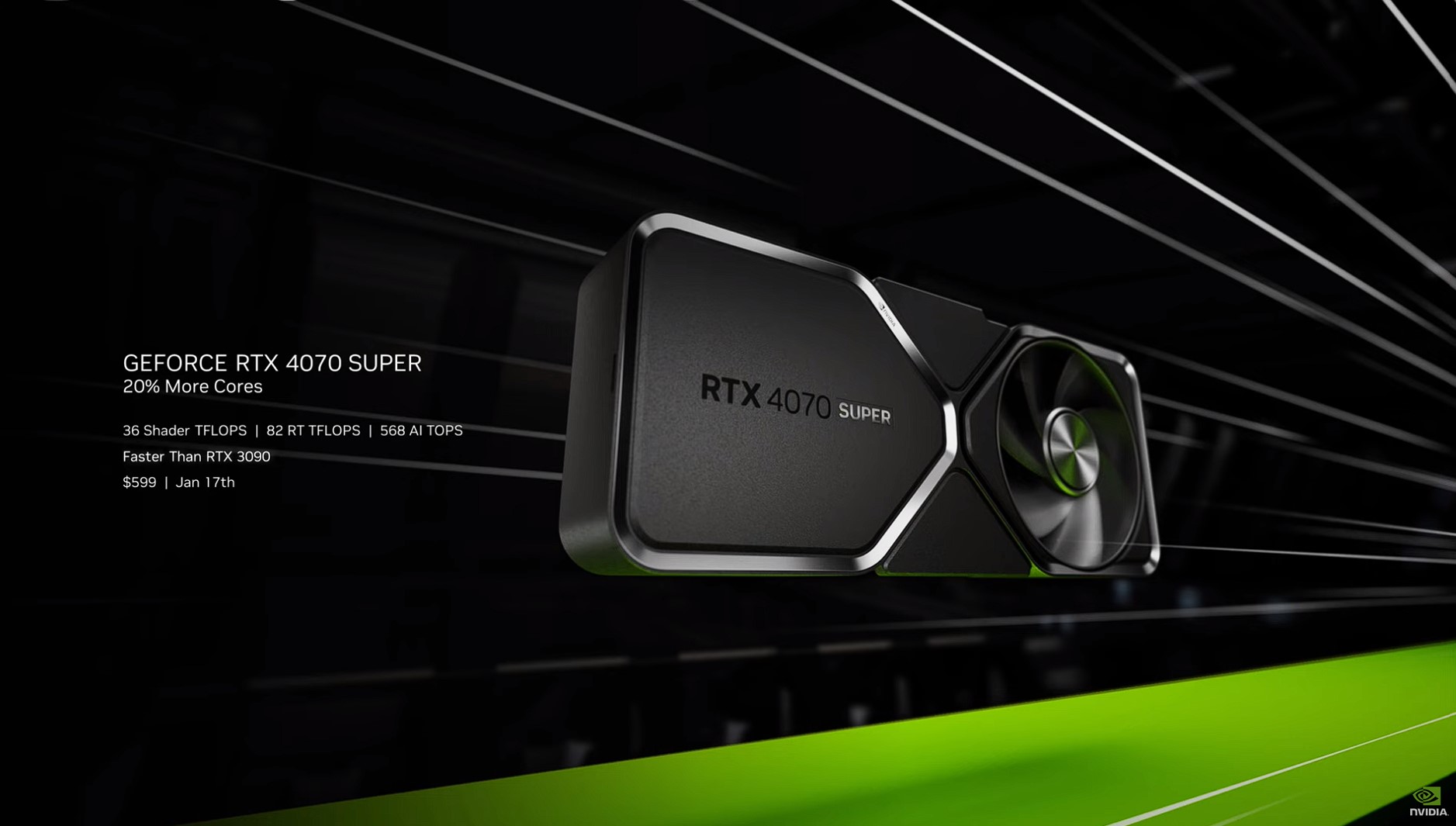
The amount of RAM is the same, however, with 12 GB of GDDR6X RAM on a 192-bit memory bus.
At first glance, it also doesn't seem that there is a lot happening to the clock speeds on the SUPER card, compared to the regular RTX 4070.
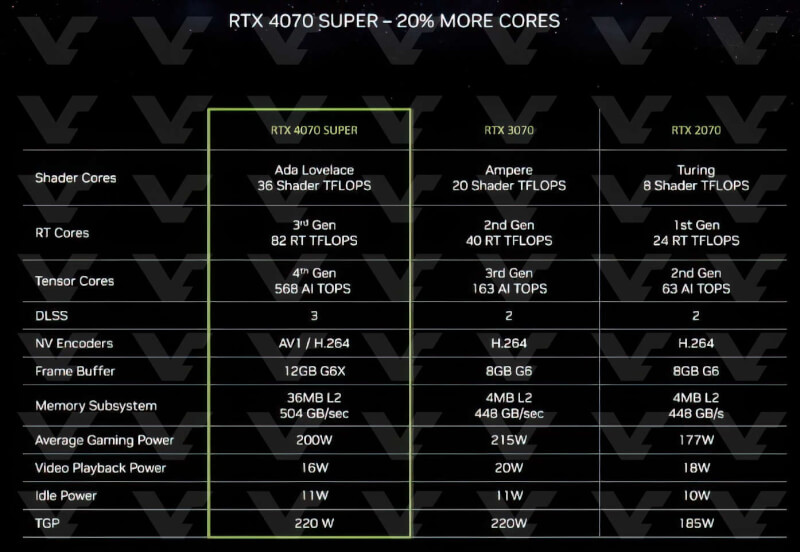
Nvidia also naturally showed a lot of performance graphs at their event. When you look at them, however, you have to remember that in the tests on the new SUPER cards, Nvidia has used Frame Generation in many of the results shown. So these are not numbers that can be compared directly, as Frame Generation is a DLSS 3 feature, and is therefore not available on the cards they compare with.
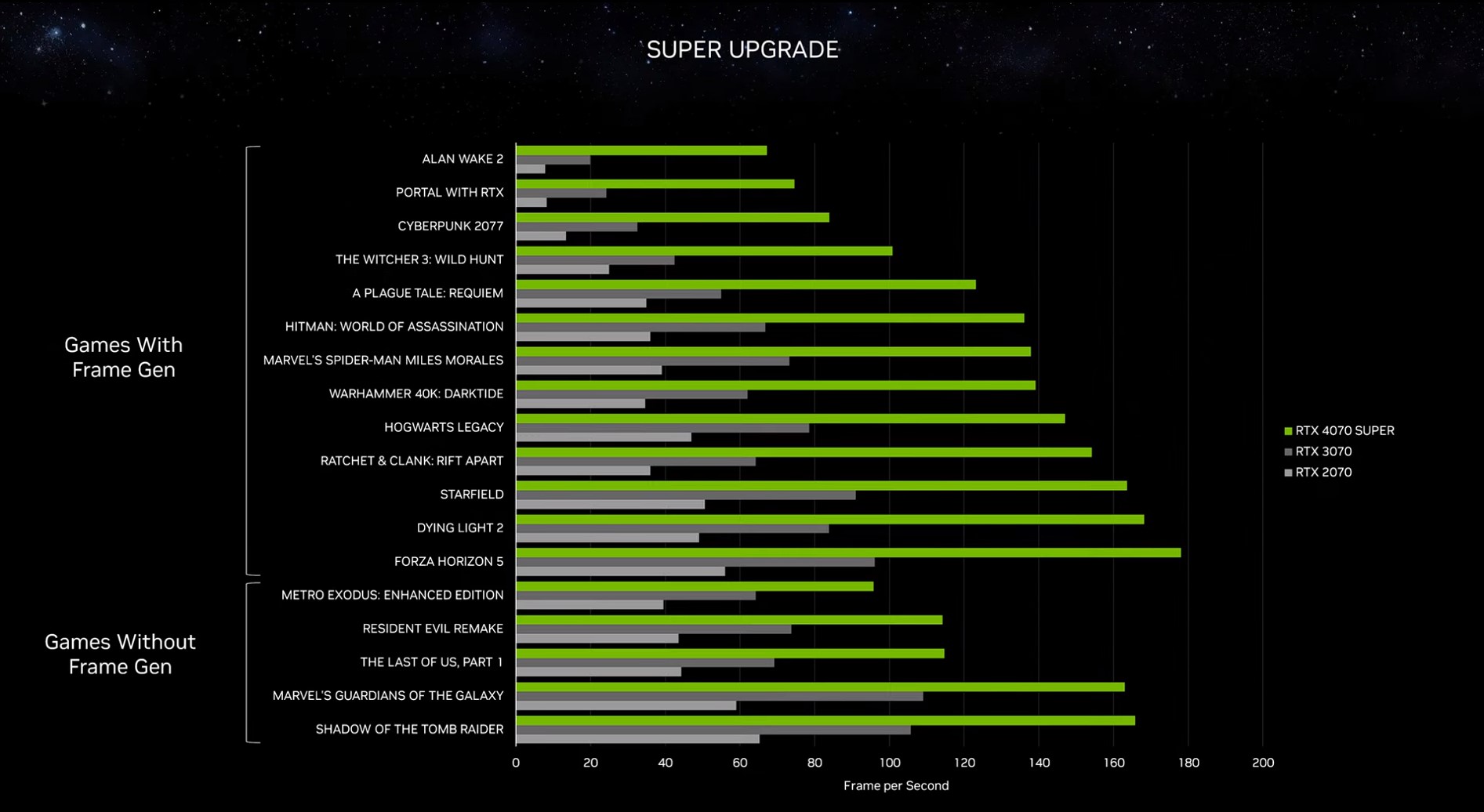
This naturally means that the progress in performance appears somewhat more impressive than it actually is.
RTX 4070 Ti Super
The next step on the ladder of announced cards was the RTX 4070 Ti SUPER. It will hit the market on January 24. Here, the new card will replace the existing RTX 4070Ti card, which will therefore no longer be produced.
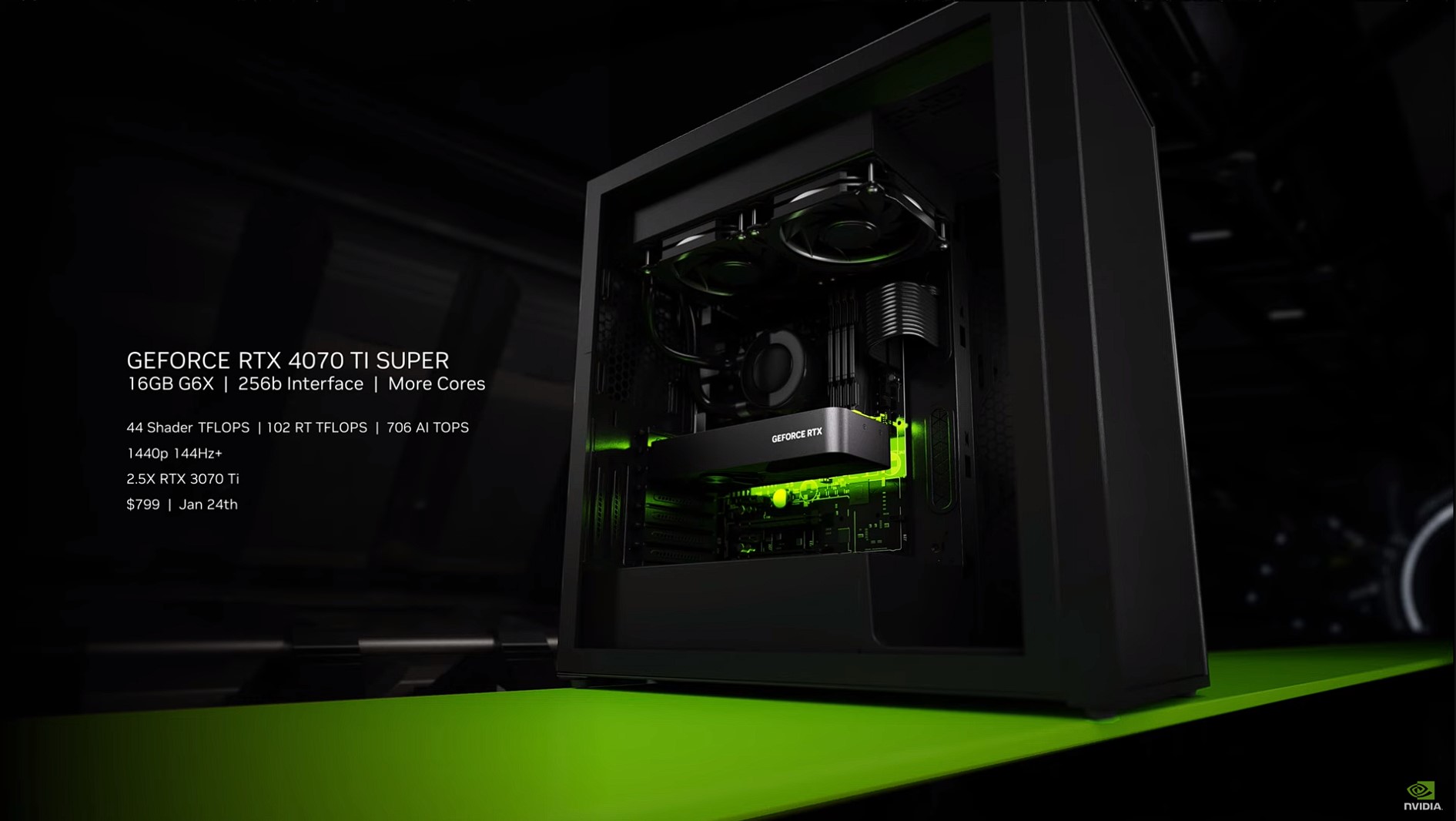
Here we can see a bit more changes to the card compared to the RTX 4070 Ti card that it replaces. We can see an increase in the number of Cuda Cores from 7680 to 8448. Tensor Cores go from 240 to 268, while RT Cores increase from 60 to 66.
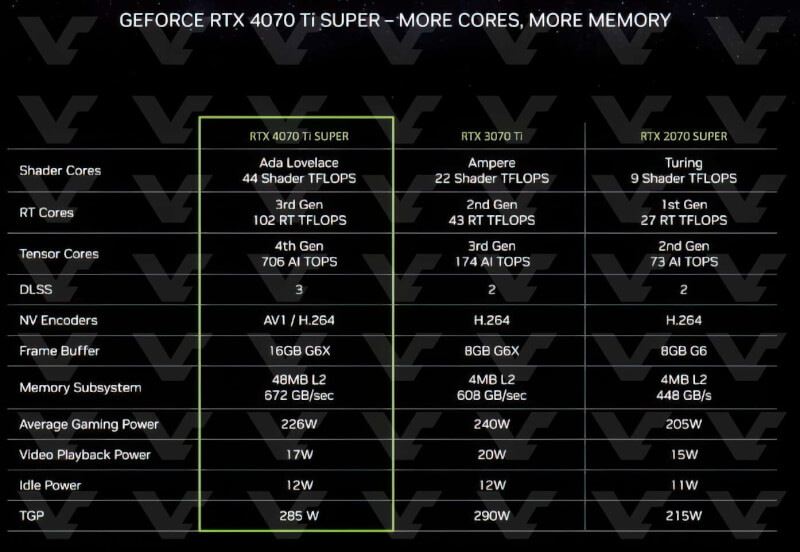
On the RAM side, however, we can see a bigger jump here, where we go from 12 GB RAM up to 16 GB and from a 192 Bit memory bus to a 256 Bit Memory Bus. It's a change that should be noticeable in more demanding games at higher resolutions.
Again, however, there are very limited increases in Clock speeds.
RTX 4080 SUPER
The last card in the series from Nvidia is the upcoming RTX 4080 SUPER. Here, the new card will also step in and replace the regular RTX 4080 card, which will no longer be produced. RTX 4080 SUPER lands on the market on January 31.
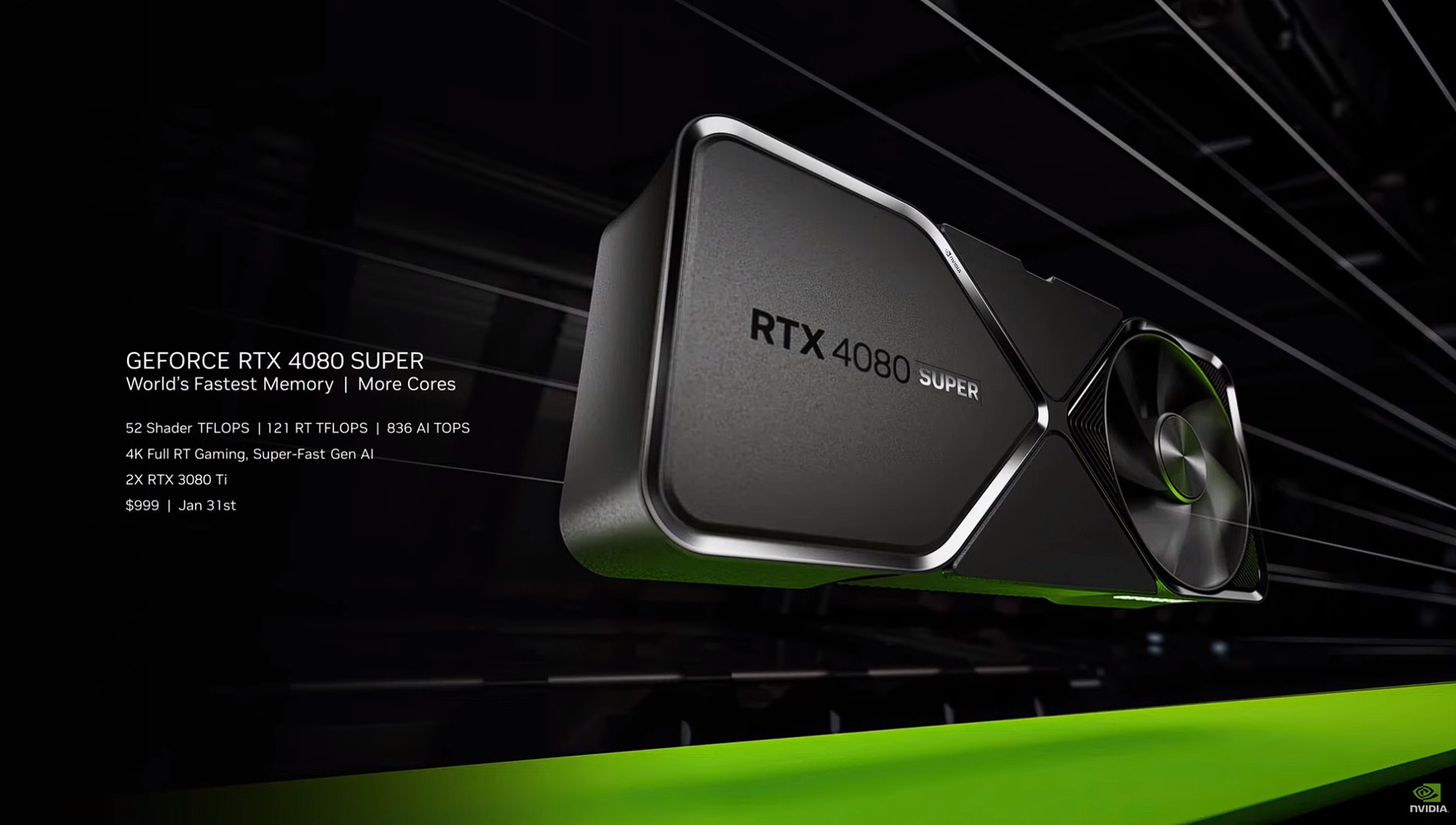
The RTX 4080 SUPER will be based on a fully utilized AD103 Ada Lovelace chip.
Here we again get an increase in Cuda Cores from 9728 to 10240, in the jump from RTX 4080 to RTX 4080 SUPER.
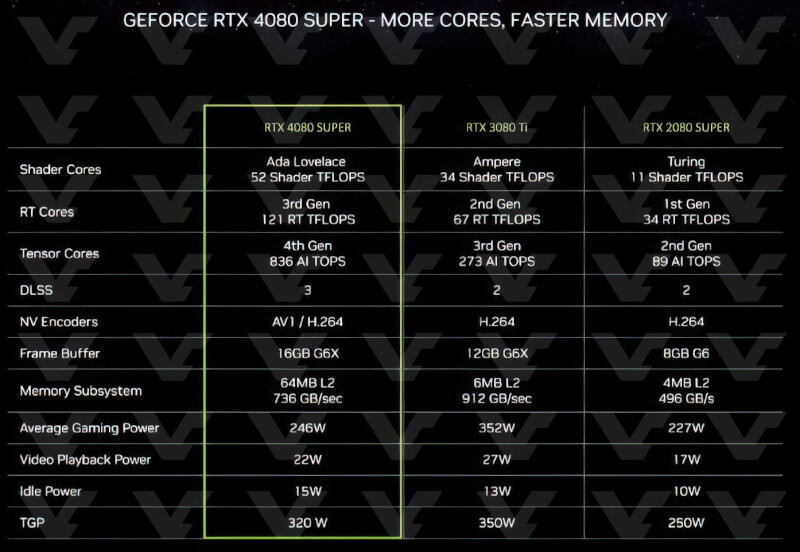
Tensor Cores increase from 304 to 320, while for RT Cores it is an increase from 76 to 80.
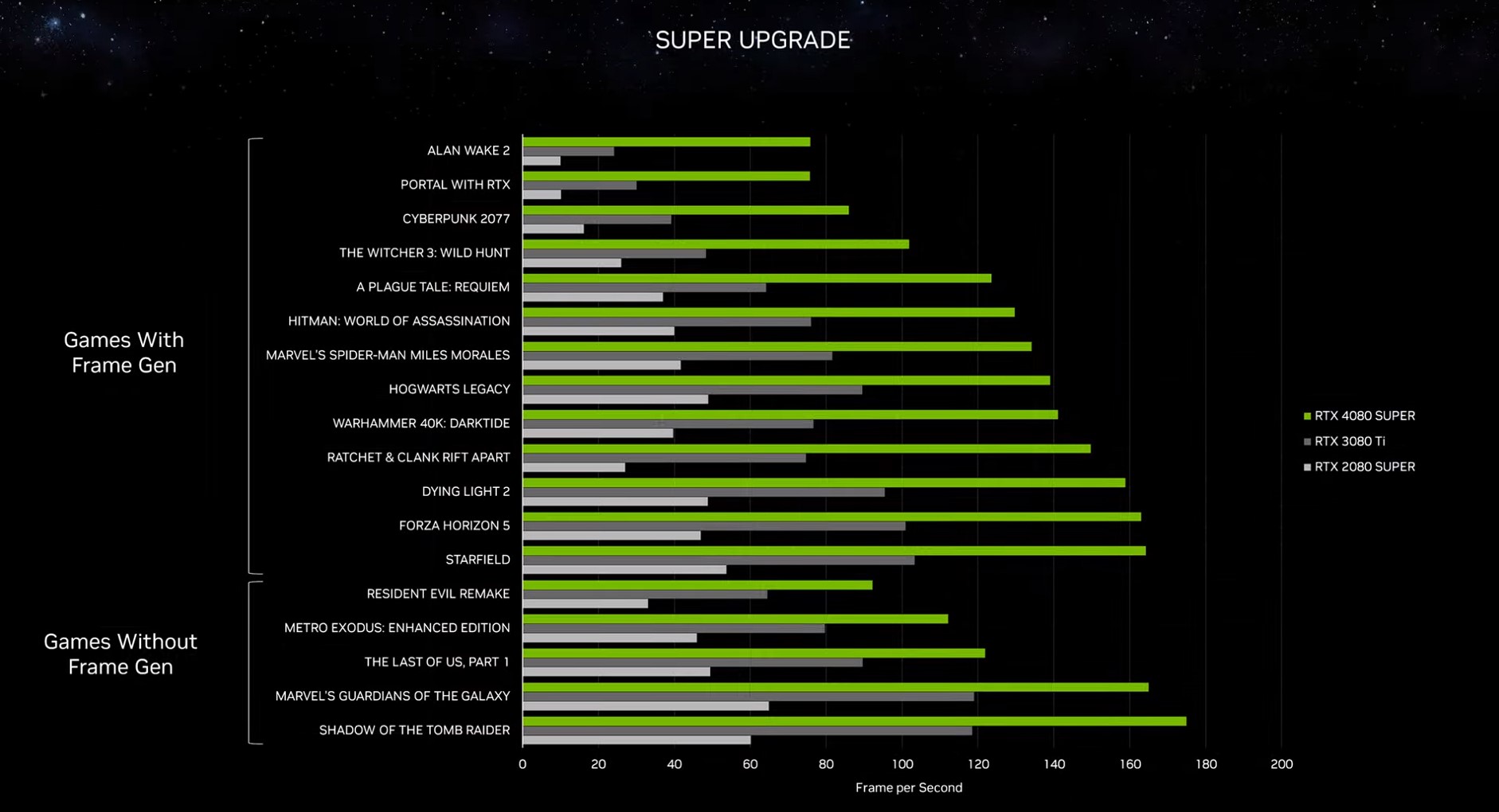
The RAM configuration has not been tampered with, so it is still 16 GB GDDR6X RAM on a 256-bit memory bus. The increase in clock speeds is also below 100 MHz here, so that is not where performance is gained.
Prices
At least as important as new specifications, of course, are the prices of the new cards. There is also some development in a positive direction here, which is otherwise not what Nvidia has been known for in this generation of graphics cards.
The RTX 4080 SUPER card lands with an announced price of $999, which is $200 below the originally announced price of the RTX 4080 card.
The RTX 4070 Ti SUPER lands with an announced price of $799, which is the same price that the RTC 4070 Ti card was announced at.

The RTX 4070 SUPER lands like the icing on the cake with an announced price of $599, which matches the original announced price of the RTX 4070.
So finally it looks like we can look forward to more performance for less or the same money as the previous cards.
Latest graphics card
-
20 Margraphics card
-
13 Jangraphics card
ASRock B580 Steel Legend
-
07 Jangraphics card
ASUS showcases new AMD RX 9700 graphics cards
-
07 Jangraphics card
ASUS ready with large selection of RTX 50 graphics
-
07 Jangraphics card
Nvidia Reflex 2 reduces gaming latency
-
07 Jangraphics card
Nvidia launches DLSS 4 with the new RTX 50 series
-
07 Jangraphics card
Nvidia RTX 50 series is ready
-
07 Jangraphics card
Nvidia launches RTX 5090 at CES
Most read graphics card
Latest graphics card
-
20 Margraphics card
ASRock RX 9070 Steel Legend
-
13 Jangraphics card
ASRock B580 Steel Legend
-
07 Jangraphics card
ASUS showcases new AMD RX 9700 graphics cards
-
07 Jangraphics card
ASUS ready with large selection of RTX 50 graphics
-
07 Jangraphics card
Nvidia Reflex 2 reduces gaming latency
-
07 Jangraphics card
Nvidia launches DLSS 4 with the new RTX 50 series
-
07 Jangraphics card
Nvidia RTX 50 series is ready
-
07 Jangraphics card
Nvidia launches RTX 5090 at CES






